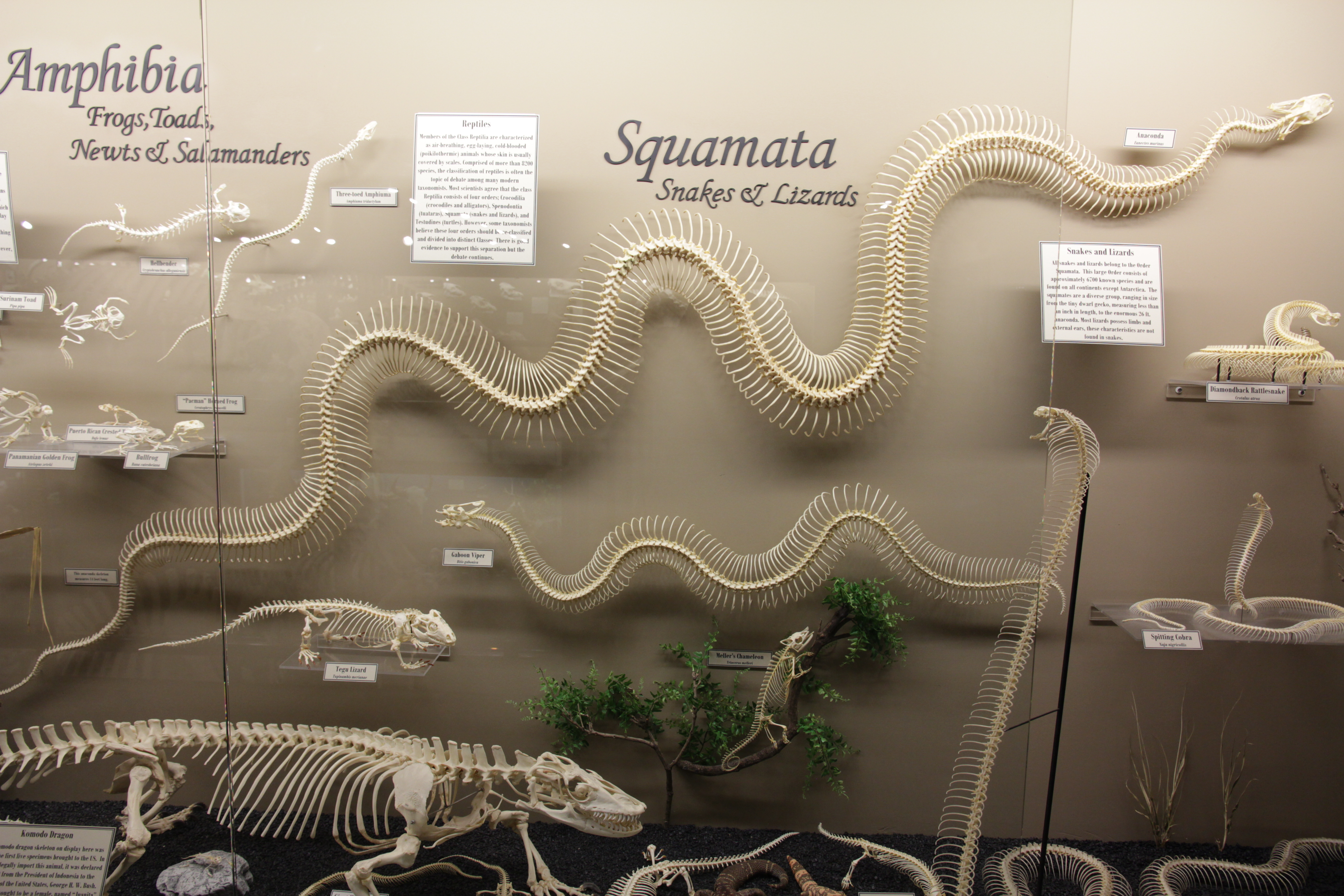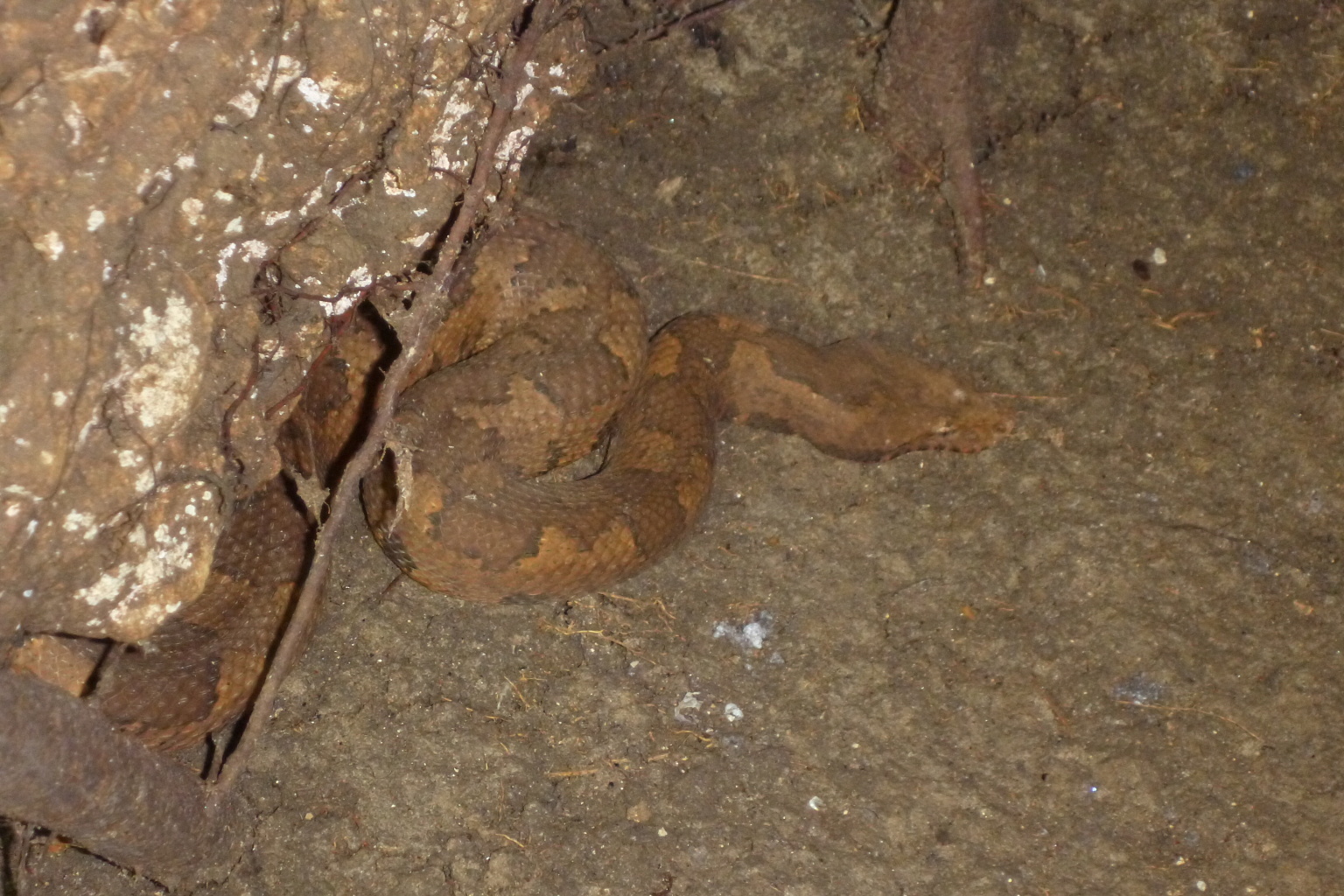|
Anal Spurs
Pelvic spurs (also known as vestigial legs) are external protrusions found around the cloaca in certain superfamilies of snakes belonging to the greater infraorder ''Alethinophidia''.Pough, F. H. (Ed.). (2004). ''Herpetology'' (3rd ed). Prentice Hall. These spurs are made up of the remnants of the femur bone, which is then covered by a corneal spur, or claw-like structure. This femur derives from ancestral hind limbs found in the most recent common ancestor of modern snakes and the other reptiles of the clade ''Toxicofera'', many of which have fully functional front and hind limbs.Palci, A., Hutchinson, M. N., Caldwell, M. W., Smith, K. T., & Lee, M. S. Y. (2019). The homologies and evolutionary reduction of the pelvis and hindlimbs in snakes, with the first report of ossified pelvic vestiges in an anomalepidid (Liotyphlops beui). ''Zoological Journal of the Linnean Society'', zlz098. Due to the fact that the spurs derive from the ancestral state of functional legs, but are no lo ... [...More Info...] [...Related Items...] OR: [Wikipedia] [Google] [Baidu] |
Green Anaconda
The green anaconda (''Eunectes murinus''), also known as the giant anaconda, emerald anaconda, common anaconda, common water boa, or southern green anaconda, is a semi-aquatic boa species found in South America and the Caribbean island of Trinidad. It is the largest, heaviest, and second longest (after the reticulated python) snake in the world. No subspecies are currently recognized, but there are two different species that have the name of the Green Anaconda which are the Northern Green Anaconda and Southern Green Anaconda. Like all boas, it is a non-venomous constrictor. The term "anaconda" often refers to this species, though the term could also apply to other members of the genus '' Eunectes''. Fossils of the snake date back to the Late Pleistocene in the Gruta do Urso locality. Taxonomy In the famous ''10th edition of Systema Naturae'' of 1758, Carl Linnaeus cited descriptions by Albertus Seba and by Laurens Theodorus Gronovius to erect the distinct species ''murina' ... [...More Info...] [...Related Items...] OR: [Wikipedia] [Google] [Baidu] |
Indian Python
The Indian python (''Python molurus'') is a large Pythonidae, python species native to tropical and subtropical regions of the Indian subcontinent and Southeast Asia. It is also known by the common names black-tailed python, Indian rock python, and Asian rock python. Although smaller than its close relative the Burmese python, it is still among the List of largest snakes, largest snakes in the world. It is generally lighter colored than the Burmese python and reaches usually . Like all pythons, it is nonvenomous. Description The rock python's color pattern is whitish or yellowish with the blotched patterns varying from tan to dark brown shades. This varies with terrain and habitat. Specimens from the hill forests of Western Ghats and Assam are darker, while those from the Deccan Plateau and Eastern Ghats are usually lighter. All pythons are non-venomous. The nominate subspecies occurring in India typically grows to . This value is supported by a 1990 study in Keoladeo Nationa ... [...More Info...] [...Related Items...] OR: [Wikipedia] [Google] [Baidu] |
Candoia
''Candoia'' is a genus of non-venomous Boinae, boas found mostly in New Guinea, Melanesia, the Solomon Islands and the Maluku Islands in Indonesia. Common names include bevel-nosed boas and keel-scaled boas. Description The species of the genus ''Candoia'' typically have a rounded and heavy body, with a flattened triangular-shaped head and an upturned nose. Colors and patterns vary greatly, but most are various shades of brown to black. Species can vary in adult size from to in total length (including the tail). Males are typically smaller than females and can be distinguished by their prominent cloacal spurs. Distribution and habitat The species of the genus ''Candoia'' are found from Samoa and Tokelau west through Melanesia to New Guinea and the Maluku Islands and the Solomon Islands in Indonesia. Behavior All species of ''Candoia'' are primarily nocturnal. Feeding The primary diet of ''Candoia'' species consists of frogs, tadpoles, fish, skinks and other lizards, rodents a ... [...More Info...] [...Related Items...] OR: [Wikipedia] [Google] [Baidu] |
Anomalepididae
The Anomalepididae are a Family (biology), family of nonvenomous snakes, native to Central and South America. They are similar to Typhlopidae, except that some species possess a single tooth in the lower jaw. Currently, four Genus, genera and 15 species are recognized. Common names include primitive blind snake and dawn blind snake. Description Species in the family Anomalepididae are small snakes, in total length (including tail) usually less than , with blunt heads and short, blunt tails. They are mainly burrowing snakes, and due to their life style their eyes are vestigial. Geographic range The family Anomalepididae is found from Southern Central America to north-western South America. Disjunct distribution, Disjunct populations occur in north-eastern and south-eastern South America. Genera T) Type genus. References External links * {{Authority control Anomalepididae, Snake families Taxa named by Edward Harrison Taylor ... [...More Info...] [...Related Items...] OR: [Wikipedia] [Google] [Baidu] |
Liotyphlops Ternetzii Beui
''Liotyphlops ternetzii beui'' is a species of nonvenomous snake in the family Anomalepididae. The species is native to northeastern Argentina, eastern Paraguay, and central-western, southeastern, and southern Brazil; the Reptile Database restricts its range to Brazil. It is locally common in Brazil. It is sometimes known as the pale-headed blindsnake. Etymology The subspecific name, ''beui'', is in honor of "T. Beu" who collected the type specimen.Beolens, Bo; Watkins, Michael; Grayson, Michael (2011). ''The Eponym Dictionary of Reptiles''. Baltimore: Johns Hopkins University Press. xiii + 296 pp. . (''Liotyphlops beui'', p. 24). Geographic range According to the IUCN, ''L. ternetzii beui'' is found in northeastern Argentina, eastern Paraguay, and in the Goiás, Mato Grosso, Minas Gerais, Paraná, and São Paulo states of Brazil. According to the Reptile Database, it is only found in the Brazilian states of Espírito Santo, Goiás, Minas Gerais, Paraná, Rio Grande do Sul, and S ... [...More Info...] [...Related Items...] OR: [Wikipedia] [Google] [Baidu] |
Sexual Dimorphism
Sexual dimorphism is the condition where sexes of the same species exhibit different Morphology (biology), morphological characteristics, including characteristics not directly involved in reproduction. The condition occurs in most dioecy, dioecious species, which consist of most animals and some plants. Differences may include secondary sex characteristics, size, weight, color, markings, or behavioral or cognitive traits. Male-male reproductive competition has evolved a diverse array of sexually dimorphic traits. Aggressive utility traits such as "battle" teeth and blunt heads reinforced as battering rams are used as weapons in aggressive interactions between rivals. Passive displays such as ornamental feathering or song-calling have also evolved mainly through sexual selection. These differences may be subtle or exaggerated and may be subjected to sexual selection and natural selection. The opposite of dimorphism is ''monomorphism'', when both biological sexes are phenotype, ... [...More Info...] [...Related Items...] OR: [Wikipedia] [Google] [Baidu] |
Cylindrophiidae
The Cylindrophiidae are a monotypic family of secretive, semifossorial, non-venomous snakes containing the genus ''Cylindrophis'' found in southeastern Asia. These are burrowing snakes and most have a banded pattern on the belly. Currently, 14 species are recognized, all with no subspecies. Common names include Asian pipesnakes and Asian cylinder snakes. Geographic range ''Cylindrophis'' are found in southeastern Asia from Myanmar, Laos, Vietnam, Cambodia, Thailand, and the Malay Archipelago, including Singapore, both peninsular Malaysia and Sarawak, and Indonesia, including the Greater Sunda Islands (Borneo [including Sarawak and Brunei]), Sumatra, and Java, as well as some of their offshore islands), Sulawesi, the Lesser Sunda Islands (Lombok, Komodo, Flores, Sumbawa, Timor [including Timor-Leste]), and east to the Maluku Islands (Halmahera, Wetar, Damar, Babar, and into the Tanimbar Archipelago). The eastern distributional limit, sometimes given as the Aru Islands off the south ... [...More Info...] [...Related Items...] OR: [Wikipedia] [Google] [Baidu] |
Uropeltoidea
The Uropeltoidea, also known as uropeltoid snakes, are a superfamily of snakes that contains uropeltids (family Uropeltidae) and Asian pipesnakes (families Cylindrophiidae and Anomochilidae). As of 2018, Uropeltoidea contains 97 species, including the eponymous shield-tail snakes (genus ''Uropeltis'' with 26 species) and their relatives (68 species in six other genera), 14 species of Asian pipesnakes (genus ''Cylindrophis''), and three species of dwarf pipesnakes (genus ''Anomochilus''). The taxonomy of boas, pythons, and other henophidian snakes has long been debated, and ultimately the decision whether to assign a particular clade to a particular Linnaean taxonomy, Linnaean rank (such as a Superfamily (zoology), superfamily, family (biology), family, or subfamily) is arbitrary. The clade name Uropeltoidea emphasizes the relatively close evolutionary relationship among these 71 species, which last shared a common ancestor about 48 [CI:36–60] million years ago, in contrast to t ... [...More Info...] [...Related Items...] OR: [Wikipedia] [Google] [Baidu] |
Amerophidia
The Amerophidia, also known as amerophidian snakes, are a clade of snakes that contains two families: Aniliidae (containing a single species, '' Anilius scytale'', the American red pipe snake or false coral snake) and the boa-like Tropidophiidae (containing two genera, '' Trachyboa'' (with two species) and ''Tropidophis'' (with either 17 or 33, depending on the authority)). The sister-group relationship between these two families is surprising and unintuitive when only morphology is considered, because Aniliidae more closely resemble the Asian pipe snakes in the families Cylindrophiidae and Anomochilidae, whereas Tropidophiidae more closely resemble constricting, macrostomatan snakes such as Boidae and Pythonidae. However, every major phylogenetic analysis since 2007 has found support for the idea that these two families are one another's closest relatives, despite having last shared a common ancestor about 91 MYA I: 77-104 The oldest fossil member of this family is the extinct ' ... [...More Info...] [...Related Items...] OR: [Wikipedia] [Google] [Baidu] |
Pythonoidea
The Pythonoidea, also known as pythonoid snakes, are a superfamily of snakes that contains pythons (family Pythonidae) and other closely related python-like snakes (but not boas, which are in a separate superfamily called Booidea). As of 2022, Pythonoidea contains 39 species, including the eponymous genus '' Python'' and 10 other genera of pythons ('' Antaresia'', '' Apodora'', '' Aspidites'', '' Bothrochilus'', '' Leiopython'', '' Liasis'', '' Malayopython'', '' Morelia'', '' Nyctophilopthon'' and '' Simalia''), all in the family Pythonidae, as well as two lesser-known families, Loxocemidae (one species, the Mexican burrowing python, in the genus '' Loxocemus'') and Xenopeltidae (three species of sunbeam snakes in the genus '' Xenopeltis''). The taxonomy of pythons, boas, and other henophidian snakes has long been debated, and ultimately the decision whether to assign a particular clade to a particular Linnaean rank (such as a superfamily, family, or subfamily In biologi ... [...More Info...] [...Related Items...] OR: [Wikipedia] [Google] [Baidu] |
Booidea
The Booidea, also known as booid snakes, are a superfamily of snakes that contains boas (family Boidae) and other closely related boa-like snakes (but not pythons, which are in a separate superfamily called Pythonoidea). As of 2017, Booidea contains 61 species, including the eponymous neotropical ''Boa constrictor'', anacondas (genus '' Eunectes''), and smaller tree and rainbow boas ('' Corallus'', '' Epicrates'', and '' Chilabothrus'') as well as several genera of booid snakes from various locations around the world: bevel-nosed boas or keel-scaled boas ('' Candoia'') from New Guinea and Melanesia, Old World sand boas ('' Eryx'') from Northeast Africa, the Middle East, and Southwest Asia, rubber boas (''Charina'') and rosy boas ('' Lichanura'') from North America, neotropical dwarf boas ('' Ungaliophis'') and the Oaxacan dwarf boa ('' Exiliboa'') from Central America, Madagascan boas or Malagasy boas ('' Acrantophis'' and '' Sanzinia'') from Madagascar, and the Calabar python (' ... [...More Info...] [...Related Items...] OR: [Wikipedia] [Google] [Baidu] |



